Introduction
How To Build A Pigeon Coop: Building a pigeon coop is a rewarding and practical project for those interested in keeping pigeons as pets or as part of a hobby. Whether you’re a seasoned pigeon fancier or a beginner looking to embark on this avian adventure, constructing a well-designed pigeon coop is a crucial step to ensure the comfort, safety, and well-being of your feathered friends. Through the essential steps and considerations involved in creating a pigeon coop that provides the ideal environment for these graceful birds.
From selecting the right location and materials to planning the coop’s layout and incorporating essential features, we’ll cover all you need to know to build a pigeon coop that not only meets the needs of your pigeons but also complements your own interests and preferences. So, let’s spread our wings of knowledge and dive into the fascinating world of pigeon coop construction. Building a pigeon coop is not just about constructing a shelter, it’s about creating a home where your pigeons can thrive.
Pigeon keeping has a long history, dating back thousands of years, and it continues to captivate enthusiasts around the world. Whether you’re drawn to the beauty of racing pigeons, the serenity of homing pigeons, or the charm of fancy pigeon breeds, a well-designed coop is the foundation of a successful and enjoyable pigeon-keeping experience. In this journey of coop construction, you’ll have the opportunity to express your creativity in designing a space that both you and your pigeons will appreciate.
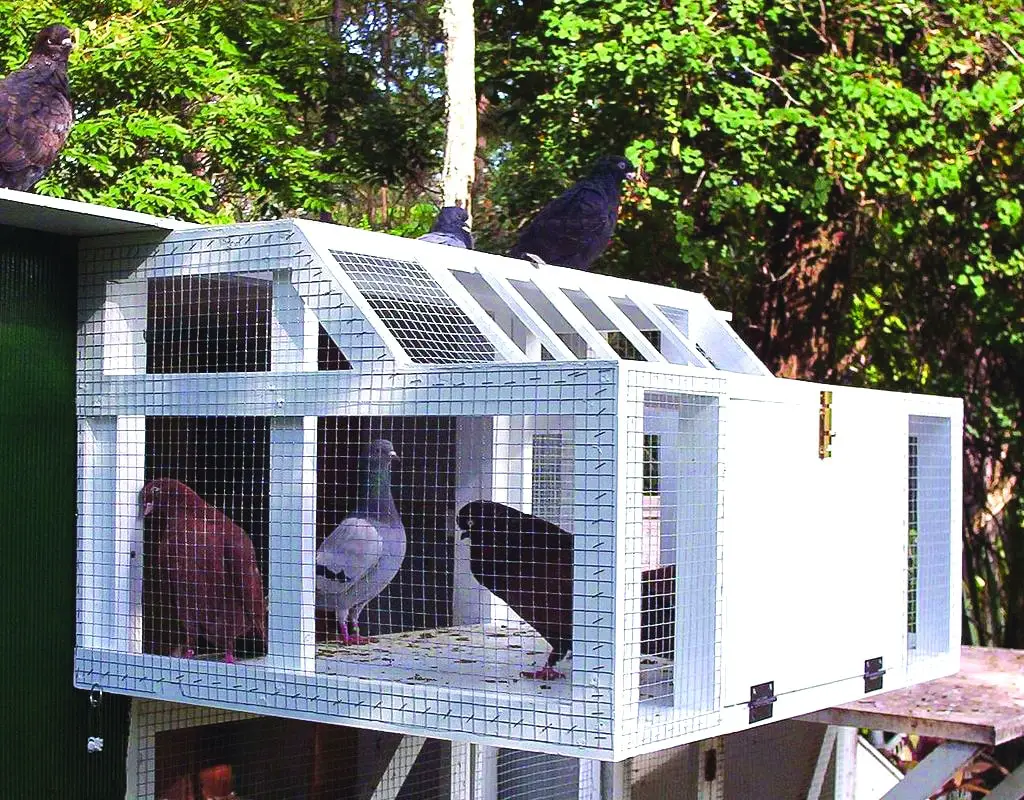
How big should a pigeon coop be?
The size of the loft should allow eight to 10 cubic feet of air space per bird. A well-made loft would include at least three partitions: one for breeders, one for young birds, and one for old birds. To make it comfortable for yourself and to aid in cleaning, the ceiling should be high enough for you to stand erect.
The size of a pigeon coop is a critical factor that directly impacts the well-being of your birds. The appropriate dimensions of a pigeon coop depend on various factors, including the number of pigeons you plan to keep, their breed, and the intended purpose of the coop. Generally, a good starting point for a pigeon coop is a minimum of 2 square feet of floor space per pigeon.
If you’re housing pigeons primarily for companionship or as pets, this basic guideline should suffice. However, if you’re raising pigeons for racing, breeding, or exhibition purposes, you might need a larger coop with more specific features. Breeding pairs, for instance, benefit from having separate nesting boxes and additional space to foster a healthy breeding environment.
For racing pigeons, a spacious loft with ample room for flying exercises is essential. Such a coop should ideally include a flight or aviary section where pigeons can stretch their wings and maintain their fitness. This allows each bird to have sufficient room for movement and comfortable living.
How do you set up a pigeon cage?
Always face south if possible. Put on blocks above ground Set away from buildings and trees, if possible. Build for control of your bird’s Aviaries. Make Large enough for bathing. Keep it simple.
Choose the Right Location: Select a location for your pigeon cage that provides protection from extreme weather conditions, such as excessive heat, cold, or wind. Ensure adequate sunlight and ventilation, as fresh air is vital for pigeon health.
Design and Construct the Cage: Build a sturdy and secure cage using appropriate materials like wood, wire mesh, or metal. Ensure that the cage is well-ventilated and has a solid roof to shield the pigeons from rain.
Create Perches: Pigeons need perches to rest and sleep. Install perches at various heights to accommodate your pigeons’ natural roosting behaviors. Ensure they are made from smooth materials to prevent injuries to their feet.
Provide Nesting Boxes: If you plan to breed pigeons, include nesting boxes in the cage. These should be placed in a quiet and secluded area to provide privacy for nesting pairs.
Install Feeding and Watering Stations: Set up food and water containers that are easy to access and clean. Pigeons require a balanced diet, including grains and seeds.
Add Grit and Mineral Supplements: Pigeons need access to grit and mineral supplements to aid digestion and maintain overall health.
Maintain Hygiene: Regularly clean the cage to prevent the buildup of droppings and ensure a clean and healthy environment for your pigeons.
What is the best housing for pigeons?
The bigger the cage the better and length or width are more important than height pigeons and doves don’t climb like parrots. We recommend a minimum cage size of 42 wide, 27 deep, 30 high for one or two mated pigeons and 32 wide, 32 high and 21 deep for one or two doves.
Size and Space: Adequate space is crucial. Pigeons should have enough room to move, stretch their wings, and fly within the loft. A general guideline is at least 2 square feet of floor space per pigeon, but more space is better, especially if you plan to house a larger number of birds.
Ventilation: Proper ventilation is essential to maintain a healthy environment. Ensure that the loft has sufficient openings or vents to allow fresh air circulation while preventing drafts.
Protection from Elements: Pigeon housing should shield birds from extreme weather conditions, including rain, snow, and excessive heat. A solid roof and weatherproof walls are essential for this purpose.
Perches: Pigeons need perches at various heights within the loft to rest and sleep. Smooth perches are important to prevent injuries to their feet.
Nesting Boxes: If you plan to breed pigeons, provide nesting boxes that offer privacy for nesting pairs.
Hygiene: Regular cleaning is vital to prevent disease and maintain a clean environment. A well-designed loft should make cleaning and waste disposal easy.
Security: Install locks or latches to secure the loft against predators, ensuring the safety of your pigeons.
How do I keep my pigeon coop clean?
Sweep or blow dust and other loose dirt off ceilings, walls, cages or nest boxes, fans, etc. Remove all feed from feeders. Scrape droppings and accumulated dust and dirt from perches and boxes. Remove all litter from the floor.
Regular Cleaning Schedule: Establish a routine for cleaning the coop. Depending on the number of pigeons and the size of your coop, cleaning may be needed daily or weekly. Consistency is key.
Remove Droppings: Start by removing droppings from the floor, perches, and nesting areas. Use a shovel, rake, or scraper to make this task efficient.
Change Bedding: Replace the bedding material in nesting boxes regularly, especially if you’re breeding pigeons. Fresh, clean bedding prevents the buildup of contaminants.
Scrub Surfaces: Scrub the interior surfaces of the coop, including walls and perches, to remove dirt, dust, and droppings. Use a mild disinfectant to sanitize surfaces and prevent the spread of disease.
Clean Food and Water Containers: Wash and sanitize food and water containers to prevent contamination. Provide fresh water daily.
Ventilation Maintenance: Ensure that ventilation openings and vents are clean and unblocked. Proper airflow helps maintain air quality.
Repair Any Leaks: Check for roof or wall leaks and repair them promptly. A dry coop is essential to prevent mold and disease.
What is the daily maintenance for pigeons?
A daily clean of the cage or loft, a fresh floor covering of straw or wood shavings, plus new, clean water twice daily and a daily supply of fresh food is essential. Remember to keep the feed and water containers clean too, sterilizing them regularly.
Feeding: Provide fresh food and clean water daily. Pigeons primarily eat grains and seeds, so ensure they have access to a balanced pigeon feed mix. Remove any uneaten or spoiled food to prevent contamination.
Water: Ensure pigeons have access to clean, fresh water at all times. Check water containers regularly and clean them to prevent algae or bacterial growth.
Observation: Spend time observing your pigeons daily. Look for any signs of illness, injury, or distress, such as unusual behaviors, changes in droppings, or changes in appetite.
Interaction: Pigeons are social birds and benefit from interaction with their caretaker. Spend time with them, offer treats, and handle them gently to build trust.
Cleaning: Remove droppings and debris from the coop or loft daily to maintain a clean environment. Pay special attention to perches and nesting areas.
Egg Collection: If you’re breeding pigeons, check for newly laid eggs and remove them promptly if they are not intended for hatching.
Nesting Materials: Ensure that pigeons have access to suitable nesting materials if you’re breeding them.
Ventilation: Check the coop’s ventilation to ensure adequate airflow for your pigeons. Proper ventilation is crucial for their respiratory health.
Do pigeons need sand?
It was once believed that grit was necessary for the mechanical breakdown of food in the gizzard to aid in digestion. Unlike parrots that remove the outside seed hull before they eat the seed kernel, pigeons and doves ingest seeds whole and seem to do fine without grit.
Aid in Digestion: Pigeons lack teeth and rely on a two-part stomach system to break down their food. The gizzard, the second part of their stomach, plays a crucial role in grinding down grains and seeds. Sand and grit serve as grinding agents within the gizzard, helping to mechanically break down food and improve digestion.
Mineral Intake: Some types of grit, such as oyster shell grit, provide essential minerals like calcium, which is necessary for bone health and eggshell formation, especially in breeding pigeons.
Prevent Impaction: Providing access to grit helps prevent impaction, a condition where undigested food can accumulate in the gizzard and cause digestive problems.
Strengthen Beak and Gizzard: The act of picking up and ingesting grit helps pigeons develop strong beaks and gizzards, which are essential for their overall health and well-being.
What do pigeons like to sleep on?
Although pigeons sometimes sleep on the ground, they prefer to sleep on elevated perches at night, probably to avoid nocturnal mammalian ground predators. Few studies to date have investigated how roosting sites affect sleep architecture.
Perches: Pigeons enjoy sleeping on perches or roosting bars. They are most comfortable on perches that are smooth and rounded to prevent discomfort or injury to their feet. Vary the heights and sizes of perches to accommodate different pigeons’ preferences.
Nesting Boxes: Pigeons may also sleep inside nesting boxes, especially during the breeding season. These provide a sense of security and privacy, making them suitable for resting and sleeping.
Platforms: Some pigeons might choose to sleep on flat platforms or ledges within their coop or loft. These surfaces should be clean, dry, and comfortable to accommodate sleeping birds.
Ledges: Pigeons are known for their adaptability, and they may sleep on window ledges, beams, or any elevated flat surface they find within their environment.
Warmth and Shelter: Pigeons are sensitive to temperature, and they prefer to sleep in places that offer shelter from the cold and wind, especially during the night.
Do pigeons need to be covered at night?
On average, birds need about 12 hours of good, quality sleep each night to remain in peak condition. Much like people, their rest periods can be disturbed by noise and bright light. For this reason, many owners choose to cover their birds at night.
Safety: Pigeons are vulnerable to nocturnal predators like owls, raccoons, and rats. A secure coop or loft with solid walls and a roof provides protection against these threats.
Darkness: Pigeons prefer to sleep in the dark. A well-designed coop or loft should have minimal artificial light sources at night to allow them to rest undisturbed.
Cleanliness: A covered coop or loft helps keep the sleeping area clean by preventing droppings from accumulating on pigeons during the night.
Comfort: Pigeons can adapt to various sleeping conditions, but they are most comfortable in a secure and quiet environment.
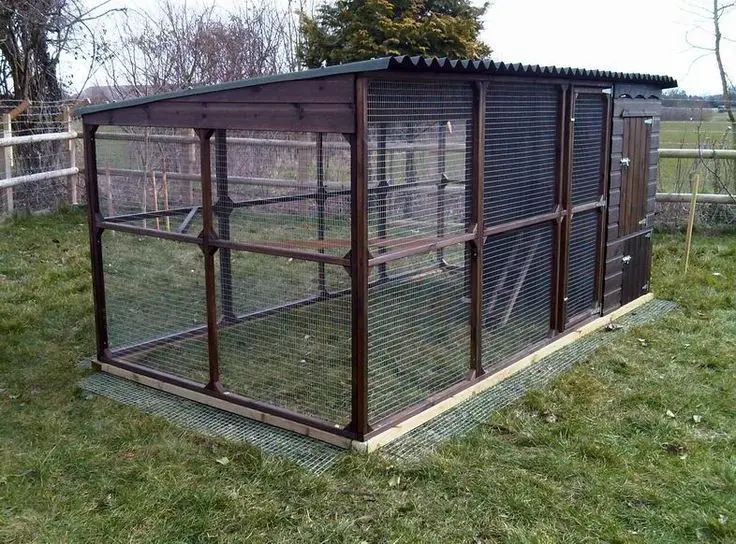
Conclusion
Building a pigeon coop is a fulfilling endeavor that combines the art of construction with the science of avian care. From selecting the perfect location to designing a functional layout, and from choosing the right materials to ensuring proper ventilation and hygiene, creating a pigeon coop is a journey that allows you to connect with the timeless tradition of pigeon keeping. Throughout this process, you not only provide your pigeons with a safe and comfortable home but also embark on a journey of discovery and companionship with these remarkable birds.
As you watch your coop take shape and your pigeons settle into their new abode, you’ll witness firsthand the joys and rewards of this unique hobby. That building a pigeon coop is just the beginning of your pigeon keeping adventure. Regular care, attention, and understanding of your birds’ needs are essential for their well-being. So, embrace the responsibility and privilege of nurturing a thriving pigeon colony, and may your coop stand as a testament to your dedication to these beautiful creatures.
As you put the finishing touches on your pigeon coop and settle into the rhythm of pigeon keeping, you’ll find that the bonds formed and the experiences shared with your feathered friends make all the effort worthwhile. So, here’s to your successful pigeon coop project and the many delightful moments it will bring to your life as a pigeon fancier. In the ongoing journey of pigeon coop construction, it’s important to remain adaptable and open to learning. Pigeons are intelligent and sensitive creatures, and as you get to know them better.

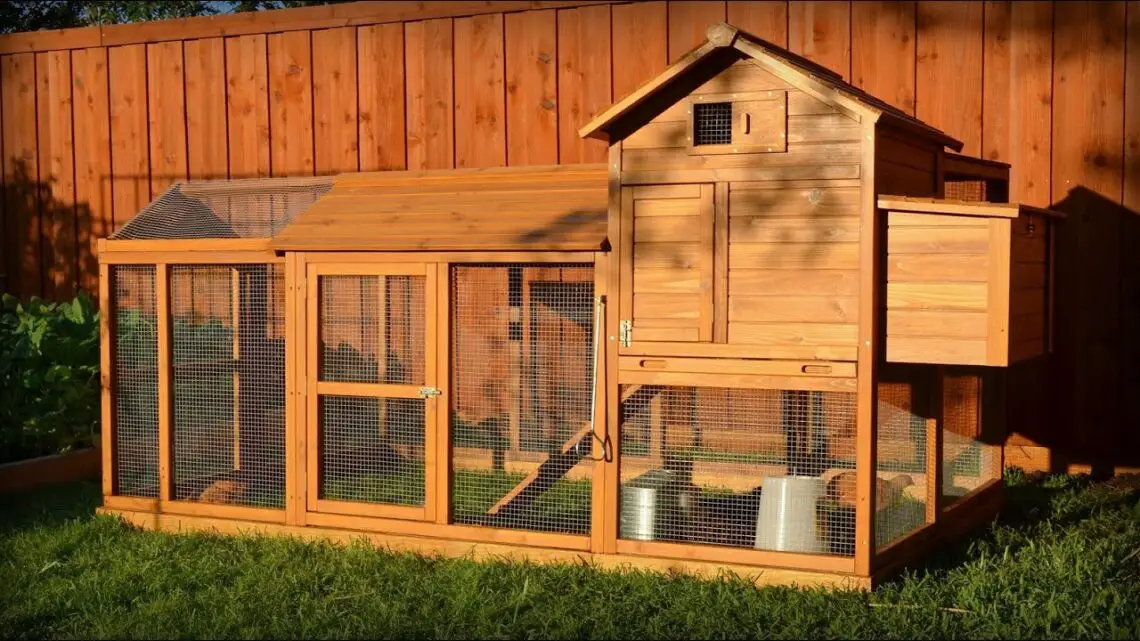
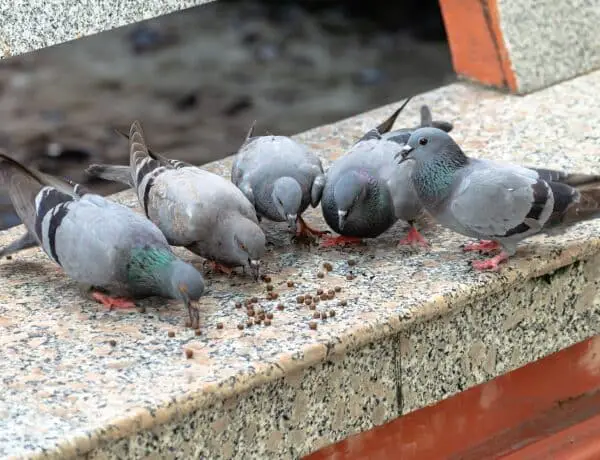
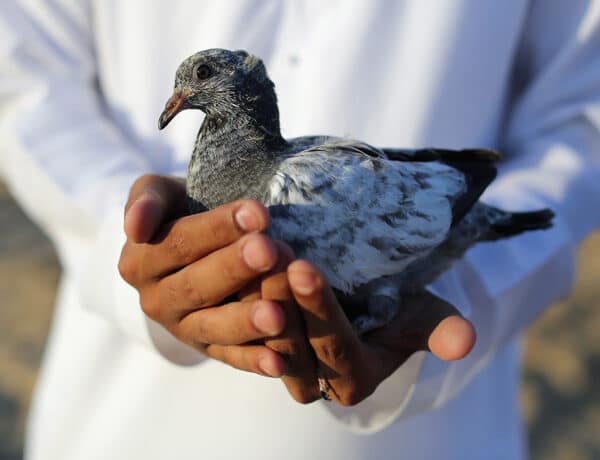
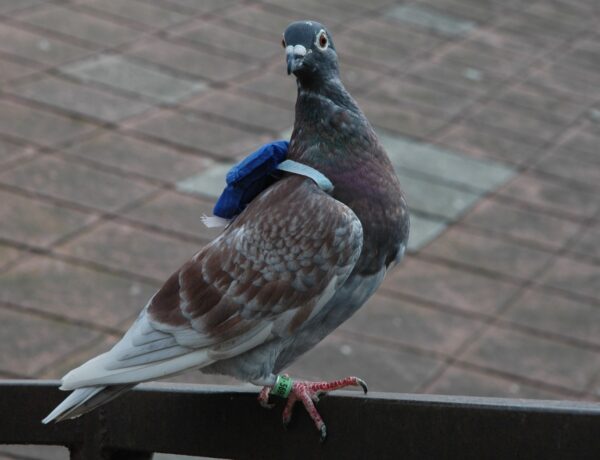
No Comments